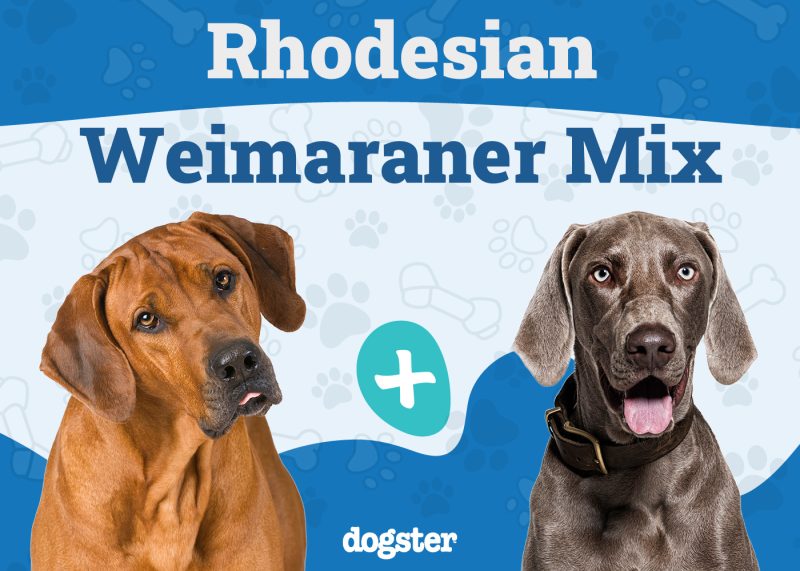If your dog has been diagnosed with epilepsy, there are likely a variety of troubling and concerning questions on your mind. The first one is most likely to be, “What is epilepsy?” and another, even more pressing one may be, “Will my dog have a shorter life span because of it?”
While many variables influence the answer to this question, we will discuss this disease and its overall prognosis, including an affected dog’s life expectancy.

What Is Epilepsy?
Epilepsy is a neurologic medical condition where the individual has repeated seizures over time. Seizures are uncontrolled and abnormal bursts of electrical activity in the brain. Depending on the type of seizure, this can bring about various signs, which we will discuss below.
While many may worry about their dog’s life expectancy, the good news is that having the most common form of epilepsy is not an automatic death sentence; many epileptic dogs can thrive, and with successful treatment, these dogs may have a normal life expectancy, or very near to it.
Epilepsy can be due to a wide variety of causes, such as low blood sugar (hypoglycemia), toxins, brain malformations, inflammation, neoplasia, or trauma, to name just a few. However, most epileptic dogs share the most common cause, which is referred to as idiopathic epilepsy. This is a diagnosis of exclusion, meaning other causes of seizures are ruled out. The exact cause of idiopathic epilepsy is unknown, but there is no known underlying brain lesion or other neurologic signs.
It is suspected that there may be a genetic component, and some breeds that may have a higher incidence of it include Beagles, Siberian Huskies, Bernese Mountain Dogs, and Golden and Labrador Retrievers, among others. Dogs with this medical condition typically start their seizure activity sometime between 1 and 5 years old.

Anatomy of a Seizure
Each type of seizure, regardless of the type, has three distinct phases.
Aura or preictal phase
This is the short period of time (maybe minutes to hours) just before the start of a seizure. Behavior changes often occur, including the dog becoming restless, hiding, or crying.
Ictus
This phase is the actual seizure itself; the type of seizure will determine the signs displayed. This phase is often brief (less than 2 minutes) unless it involves seizure clusters (more than one seizure in a 24-hour period) or status epilepticus (seizures greater than 15 minutes in length or repeat seizures without recovering in between; a medical emergency).
Generalized seizure
The most common type of seizure in dogs is a generalized seizure, in which a dog will lose consciousness and exhibit one or more of the classic signs of a seizure, such as:
- Stiffness
- Falling to the side
- Paddling of the limbs in the air
- Twitching or shaking
- Convulsions
- Excessive salivation
- Involuntary vocalization
- Involuntary urination
- Involuntary defecation
Partial seizure
This type of seizure affects a specific area of the brain. These dogs can be conscious but do have altered mentation. There may be short bursts of sudden aggression or aimless running. Partial seizures sometimes cause fly-biting, tail-chasing, and flank-sucking.
Postictal phase
This period of recovery after a seizure can vary in length but is often less than 30 minutes. During this phase, the dog may experience behavioral changes such as disorientation, confusion, pacing, weakness, or blindness.


Epilepsy Diagnosis
Your vet will ask you several questions regarding the experienced seizures and perform a complete physical and neurologic exam on your dog. Next, different types of bloodwork and urinalysis are used for baseline testing and to rule out some causes of seizures.
The history and physical exam findings, coupled with the signalment, in some cases, may point to the need for further testing such as with advanced imaging like an MRI (magnetic resonance imaging) or CT (computed tomography), a CSF (cerebral spinal fluid) tap, or EEG (electroencephalography). In cases when further testing is not recommended, sometimes a presumptive diagnosis, which utilizes the available clues without confirmatory tests, may be done. If there is no improvement or a worsening of signs despite treatment, further testing is the next step.
If you’re concerned about your dog’s health we suggest you speak to a vet.
Epilepsy Treatment
Treatment recommendations for seizures, including exactly when to start it, can vary among clinicians, but one area of common concern is that if a dog is having seizures, they may get worse as time goes on if left untreated. Because of this, treatment may ideally be started early, but usually not after the first seizure. If seizures occur infrequently (such as once every few years), treatment may not be recommended. Some recommendations to start treatment can include if there are more than two seizures within 6 months, any episodes of cluster seizures or status epilepticus, or if the postictal period is very long or otherwise abnormal.
Anticonvulsant medications can be used to treat seizures, and sometimes, more than one medication may be needed, or medications may need to be changed over time, but they should not stop suddenly. All the dosing and changes should be made under the direction of a veterinarian. Some drugs have side effects, which can include sedation, weight gain, increased drinking, eating, and urinating, as well as changes to the liver. Therefore, careful monitoring and routine bloodwork are very important.
In addition, keeping a “seizure calendar” with details such as the date, time, length of seizures, and what exactly happened will help with continued management.
In most cases, a dog with epilepsy will require lifelong medication, and this can be a big commitment to consider. Unfortunately, even with medication, seizures are typically not completely resolved. The goal of medication is to decrease seizures by about 50% without creating toxic or harmful side effects. The hope is to allow the affected dog (and owner) a better quality of life.
An Epileptic Dog’s Prognosis
Depending on various factors, many epileptic dogs can be well-managed and live long and happy lives while being treated. As mentioned, some epileptic dogs with successful treatment may have a normal or near-normal life expectancy.
Idiopathic epilepsy is by far the most common cause of epilepsy in dogs. Veterinary neurologists report that for many dogs with idiopathic epilepsy, their life expectancy is not shortened by the disease. In fact, one study found that the life expectancy for dogs with idiopathic epilepsy is around 9.2 years, which was similar to that found for dogs in the general population. Risk factor complications that may affect this can include cluster seizures or status epilepticus, which can lead to a shorter life span and poorer prognosis.
According to the University of Missouri Veterinary Health Center, about 60%–70% of dogs who have idiopathic epilepsy with carefully monitored treatment have good seizure control. Life expectancy can be as much as 11 years for dogs without risk factor complications. In contrast, epileptic dogs that have cluster seizures or status epilepticus may only have an expected lifespan of 8 years.
The prognosis of other causes of epilepsy depends on the individual disease as well as when treatment is sought and how effective it is. For example, dogs that have epilepsy due to an intracranial cause (for example, a brain tumor) may have a shorter life span.

Conclusion
While each epileptic dog is an individual with their own set of unique circumstances, their life expectancy with well-controlled medication can be as long as for non-epileptic dogs. Despite this, most epileptic dogs will not be totally cured from having seizures, and treatment is a lifelong commitment.
The prognosis may be more difficult to predict for dogs that have uncontrolled seizures despite medication. Regardless of your dog’s particular circumstances, if they’re suffering from epilepsy, make sure to keep a detailed calendar of the seizures and communicate this information regularly to your veterinarian for the best possible planning, treatment, and overall outcome for your pet.
Featured Image Credit: Kittima05, Shutterstock





















2 Responses
Thank you for the information. We have a 140 lb NewfePoo…
that has had seizures since he was about 2yrs old… He is just turned eight years old… I read about any information I can get.. my husband’s an ER physician so he’s familiar. Cooper is on increased medications as time has gone on and tolerates those well …unfortunately he’s having a seizure now sometimes every two weeks but recovers .. in between you can’t tell he has any seizures just like the person with epilepsy… no history in either parents that we know at all…
Hello,
Thank you for your message and for sharing your experience with Cooper. We're sorry to hear about his struggles with seizures, but it is clear he is in excellent hands with you, especially with your husband's expertise as an ER physician. Dealing with seizures, even with medication, can be very challenging and worrying.
If you would ever want a second opinion or a professional advice, we would recommend you to book a 20-minute video-call appointment with one of out veterinarians from www.PangoVet.com. They will answer all your questions and hopefully give you some good care tips.
Best wished to all of you!